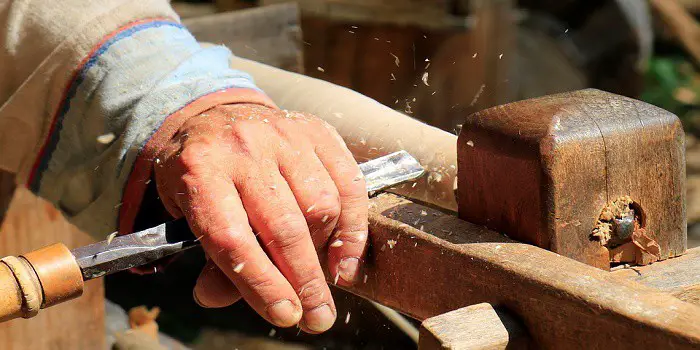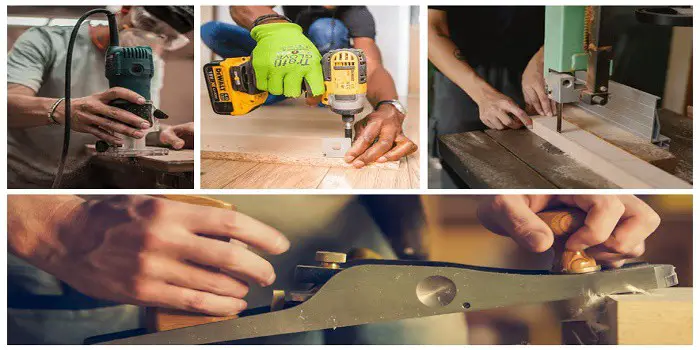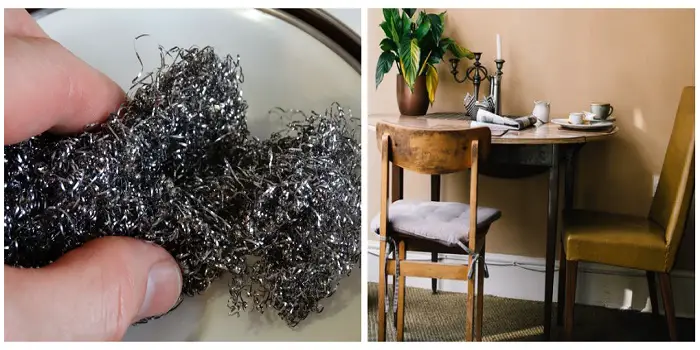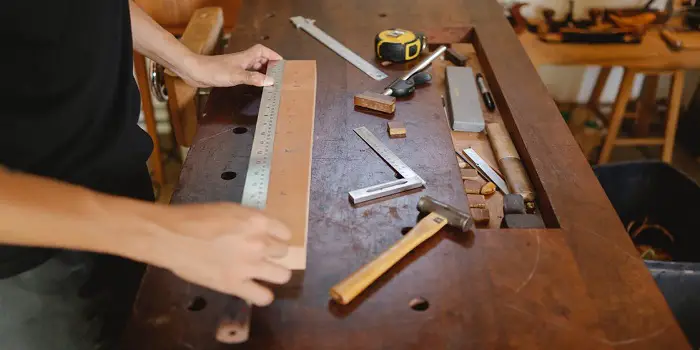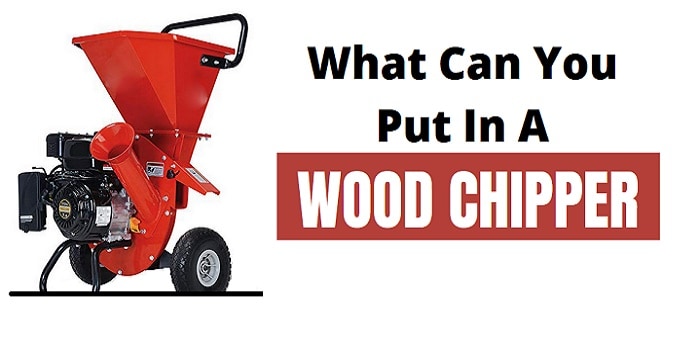
One of the best ways to clean your yard of twigs, leaves, and branches after a storm is using a wood chipper.
This device chops up the wood into smaller pieces, so you can either dispose of or use the remains for your yard.
While most people will naturally associate a wood chipper with different types of wood, there are a few other materials that can be placed into the machine as well.
But, are these materials safe to chip? Should you really put them in your machine?
In this article, I will try to make it clear what you can and cannot put into a wood chipper.
Knowing this will help you keep your machine in good use and safe for a long.
Later I will also discuss how to use the wood chipper machine properly along with a few essential factors you need to look at when you need to choose one.
So, let’s dive in…
Things You Can Put in a Wood Chipper
Wood chippers are machines designed specifically for wood.
This means you can put any kind of organic wood (from plants and trees) into the wood chipper machine, provided the diameter of the branch is not more than 3 inches.
Keep in mind that leaves should only be put in if there is a shredding feature available. If the machine does not have a shredding feature, then the leaves will clog up the chipper.
This is because the machine itself is designed to chop which only turns the leaves into a pulp that slows and eventually jams the chipper.
This may make you want to get a chipper that has a shredder also.
But one disadvantage of a machine that can do both is that it limits the size to a greater degree of the wood you can place into the chipper.
This means that if you have large branches to chop up, then foregoing the shredder feature is a good idea.
Things You Should Completely AVOID Putting
Now that you know what you can always put it into a wood chipper.
What follows are the items that should never be introduced.
1- Bamboo
Whether you have a chipper or shredder, the bamboo chutes are quite hard and will damage the blades.
It will also clog up the deflector quickly, so you have an additional issue.
If you have bamboo issues in your yard, there are better ways to clear out the problem.
- Cut the Bamboo to Ground Level, then Mow the Area
- Cut Bamboo until It is Three Feet Tall, then wait One Year to Remove
- Use a Herbicide or Cover the Bamboo to Eliminate the Sunlight
2- Corpses
Despite what you may have seen in the movies, a wood chipper is no place to dispose of a corpse.
First, if it is human remains that is quite illegal.
Second, the carcass will clog up your machine quickly which creates a big mess and requires considerable cleanup.
In preparing for the zombie apocalypse, you can rule out your wood chipper as corpse disposal.
3- OSB
If the OSB is less than ½” thick and in 2” strips, it is possible to chop it up in a chipper, but that is a waste of time.
You are far better off either donating or repurposing the OSB for another project instead of chopping it up in a chipper.
4- Pressure Treated Lumber
You should not put lumber into a wood chipper at all, especially if it has been pressure treated.
This is because pressure-treated lumber contains chromated copper arsenate which is a health hazard when released.
Plus, the lumber itself is too hard and will damage your chipper.
Virtually all consumer wood chippers will have a large warning about the dangers of putting in lumber.
Doing so will normally void the warranty.
5- Rubber & Tires
You should never put the rubber (and especially tires) into a wood chipper.
Tires have steel belts that will quickly destroy the blades.
Even the rubber alone is too thick for the chipper which will cause the motor to overheat and break down.
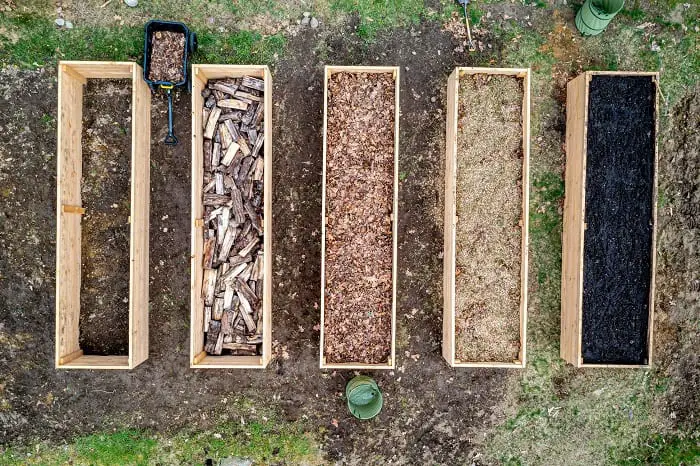
Things You May Sometimes Put in a Wood Chipper
You now know what you can and cannot put into a wood chipper.
But there are materials that you can sometimes put into a chipper without putting you or the machine in danger.
You should always follow the instructions provided to the machine.
If it says you cannot put in specific materials, then avoid putting in those materials.
If the material you want to introduce is not listed at all, then do not put it into the chipper.
Keep in mind that the following materials should only be occasionally introduced into the chipper.
Repeated usage may result in a damaged chipper.
1- Acorns
A chipper can handle acorns pretty well, but one issue is that the blades may have difficulty striking the acorns directly because of their small size.
An indirect strike may lead to the acorns being kicked out of the chipper at a high speed toward you or anyone nearby.
This presents a definite danger if you are not wearing eye protection.
If your chipper has a shredder feature, it can handle acorns considerably better.
2- Cardboard
It seems logical that cardboard can be introduced to the chipper because it is a wood product.
However, you should endeavor to not put too much cardboard into the chipper at once.
If you do, it may clog the machine. However, a good wood chipper either with or without a shredder can chop up cardboard fairly easily.
That is, as long as you do not put in too much at one time.
3- Grass
Unless your chipper has a shredding feature, you should not put grass into the machine.
While the grass will not harm the blades, it will clog them up rather quickly.
This is because the grass is too thin to be properly chopped.
However, if the chipper does have a shredder, then you can shred the grass easily so that it is not an issue.
In fact, shredded grass makes for the perfect composting material.
4- Paper or Newspaper
Small amounts of paper can be chopped without issue assuming the shredding feature is present.
However, larger amounts of paper are not recommended.
This is because while individual pieces of paper are a little issue if introduced collectively they can clog up the machine.
Do not put paper into a wood chipper that does not have a shredding feature or it will clog quickly.
5- Pine Cones
For the most part, pine cones are okay to put into a chipper.
In fact, a ground-up pine cone makes for exceptional compost for your yard.
The only downside is that pine cones tend to be quite dusty when chopped up, so be sure that you wear a dust mask.
Also, you will need to clean the chopper as the cones often leave behind their sap.
6- Pine Limbs
Like pine cones, fresh pine limbs have plenty of sap as well.
This means introducing a considerable amount of pine limbs to your chipper may clog up the machine.
If you have a chipper that does not have considerable power, you may find yourself having to clean the chipper to unclog it.
For higher-powered chippers, the speed at which the blades move will often remove the sap buildup so it is not that big of an issue.
7- Sweet Potatoes
It is possible to chop up sweet potatoes with a wood chipper. Although why you want to do this is another matter.
And while you will get chopped up and most likely mashed sweet potatoes, the cleanup of the chipper itself is considerable.
If you do not fully wash out the chipper, you will have plenty of bugs and a nasty odor that will build over time.
8- Vines
Vines tend to clog up chippers. This is because they tend to wrap around the components and blades so that they no longer function properly.
For longer vines, there is the additional issue of them wrapping around your arm and pulling that into the machine.
If you want to chop up the vines, at least cut them into smaller pieces before introducing them into the chipper.
This will greatly reduce the likelihood that the vines will clog up the machine.
It also helps if you are using a high-powered chipper as the speed of the blades will reduce the chances of getting clogged.
9- Wet Wood
Wood that is wet tends to be more difficult to chop up compared to wood that is dry.
This means that after a storm if the fallen twigs, branches, and brush are still wet, you can normally put them in a chipper.
It just may take a little longer for the material to be chopped up.
To be safe, be sure that the wet wood you want to be chopped is smaller in diameter than the dry wood you normally put into the machine.
This will help protect the chipper from trying to chop material that has greater density because of the water.
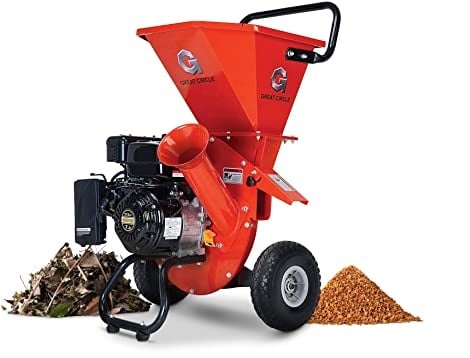
How to Use a Wood Chipper?
Most wood chippers are mobile which means that they have wheels and are light enough to be moved around where needed.
Their primary purpose is to grind wood and other materials into smaller pieces.
This includes wood and leaves, which can be shredded to create organic materials to provide nutrients to the soil.
But before you plan to shred, you must know how to use your machine to get the job done without any problems.
Here are a few steps to follow when you begin the wood-chipping process…
Step 1- Place your wood chipper on leveled solid ground and activate the parking brake to prevent any movement or tipping
Step 2- Adjust the chip deflector and chip chute that allows for controlling the direction and distance in which chips are thrown
Step 3- Start by feeding the blunt end of the material you are chipping and consider adding some dry and green limbs for moisture and easy chipping
Step 4- While feeding the twigs and branches into the machine, stay at a distance to avoid any chance of getting hit by small wood pieces that may eject
Step 5- Finally, after you have finished with the chipping of your debris, collect the chipped wood into a container so that you can employ it to a good use
Safety Tips for Using a Wood Chipper
If you do decide to purchase or use a chipper or shredder by yourself, then you should emphasize caution.
These devices are quite powerful and dangerous when not used properly.
One mistake and you could lose a finger, hand, arm, or worse.
It should be noted that commercial wood chippers are the most dangerous with consumer models being considerably safer.
If you are going to operate a wood chipper, then you should do the following to protect yourself.
- Clear Away the Work Area, especially around the chipper
- Wear Eye and Ear Protection
- Fully Read the Safety Manual for Proper Operation
- Know All the Safety Features and Hazards when Using a Chipper or Shredder
- Do Not Put in Materials that are Not Recommended for the Chipper or Shredder
How can I sharpen wood chipper blades?
Sharpening the blades of a wood chipper is easy with a disc sander.
Just rub the sander over the edges of the blades, making sure that you keep the sander steady and straight while rubbing.
Can you chip wood using this machine in the rain?
No, it is not recommended to use your wood chipper in the rain.
Water droplets can get into the inner parts of the machine and can damage the chipper or its blades.
What are the Different Types of Wood Chippers?
Wood chippers come in different shapes, sizes, and functions.
This may make choosing the right one rather daunting at first.
So, the very first step when picking the machine for your garden is whether you want to choose a wood chipper, wood shredder, or a combination of the two.
a) Chipper
This is a consumer model wood chipper designed to chop up branches to 3.5” in diameter.
Chippers tend to be quite heavy with some going up to 350 pounds.
However, there are chippers that weigh considerably less, which means that you can move them around the yard easier.
One issue with most chippers is that they are gas-powered which means they generate a considerable noise when in use.
Plus, you will need to maintain the engine just like you do your vehicle.
Wood chippers are also far more expensive with some ranging upwards of $3500.
Although you can find good, reliable models around the $500 mark.
b) Shredder
Unlike a chipper which is for processing wood, the shredder is designed to shred leaves and small branches no more than 1” in diameter.
The shredder can easily be moved around the yard. Plus, they tend to be inexpensive with some priced as little as $100.
Shredders also tend to be electrically powered, so you will need an extension cord if you need to move it away from your home.
c) Combination Chipper and Shredder
Some wood chippers also have a shredding option which makes them perfect for getting rid of leaves and grass along with twigs and branches.
Feeding leaves and grass into a chipper that does not have a shredder will quickly clog up the machine.
So, if you want the machine to chop or shred up all the materials in your yard, a combination of chipper and shredder is the best choice.
d) Commercial Wood Chippers
If your property needs a major cleanup, such as after a storm, then you may need a commercial wood chipper.
This is a device that is quite large and can chop up wood from 5” up to 24” in diameter.
If the chipper has a feed mechanism, then you can dispose of the material quickly.
On the downside, a commercial wood chipper is quite large, cumbersome, and weighs a considerable amount.
They are often towed behind vehicles for use. Plus, they cost a considerable amount as well, ranging from $5000 up to $20,000.
One option if you only need an occasional cleanup is to rend a consumer or commercial wood chipper or chipper and shredder combination.
You can rent them for the day, week, or longer depending on your needs.
Or, you can hire a company that provides a wood chipping or shredding service and have them do the work for you.
It costs considerably more but may be worth it depending on the extent of the cleanup.
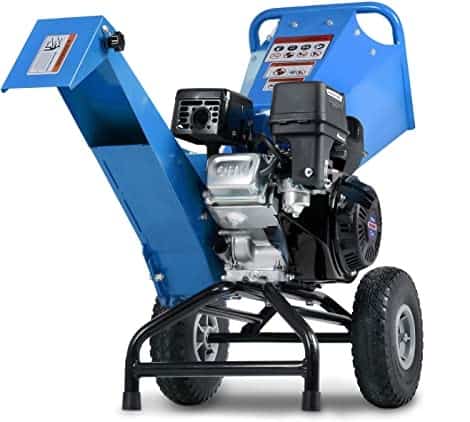
How to Select the Right Wood Chipper for Your Yard?
Now that you know the different types of machines and that you should operate them safely, the next step is choosing the right type of chipper for your needs.
First and foremost, your selection process should be based on your needs.
It does little good to get a wood chipper that does not perform to your expectations.
Or, to waste money paying for a chipper that does things you do not need.
Your selection process should start with the following.
a) Capacity
The feed capacity of the wood chipper may be the most important element in your choice.
The larger the feed capacity, the larger the diameter of wood that the machine can handle.
Look over your property to see the average size of the branches and twigs that will need to be ground up.
For example, if most of the branches are 3” or less in diameter, then a feed capacity of 80mm which is just over 3” will work.
Keep in mind that most residential property does not require a wood chipper with 100mm or 4” capacity since the larger pieces can be burned instead of chopped.
b) Horsepower
This is somewhat more difficult to determine.
But generally speaking, if the wood you are chopping is seasoned or has been left around a long time, then you should invest in a chipper with a higher horsepower rating.
This will also depend on the type of drum being used by the chipper as well.
Otherwise, standard horsepower for wood chippers is fine for most jobs.
c) Storage
One aspect that often gets overlooked is where are you going to keep your wood chipper when it is not in use.
Some chippers are no bigger than a wheelbarrow while others range up to the size of a large trailer.
Be sure to look over your storage space first before selecting the wood chipper that you need.
Otherwise, you may consider renting the chipper instead of purchasing one.
Few Other Considerations
In addition to the main considerations, you should also consider the following.
- Chipper & Shredder Combination
- Good Warranty
- Easy Maintenance
- Available Spare Parts
- Maneuverable
- Ability to cut through nails or screws
Final Thoughts
Your wood chipper is a versatile device.
It’s a valuable asset to the maintenance of your yard because you can easily get rid of small limbs, twigs, and other materials after a storm.
Plus, you can create good wood compost to provide nutrients to the plants with the help of this machine.
With that said, be sure that you follow instructions and only put in what the chipper recommends in the manual.
When in doubt, protect yourself and the warranty on your wood chipper by not putting the material inside.
Also, a good wood chipper will serve you well year after year. Be sure to choose the right one for your needs.
Share the post "What Can You Put in Your Wood Chipper – And What Not?"

Hi, I am Mark Garner a professional carpenter, woodworker, and DIY painter. I live in the small city of Peoria, Arizona as a semi-retired woodworker. I have started this blog with a simple motive to help you with my wood experience in this sector. If you like to know more about what I love doing and how it all got started, you can check more about me here.

